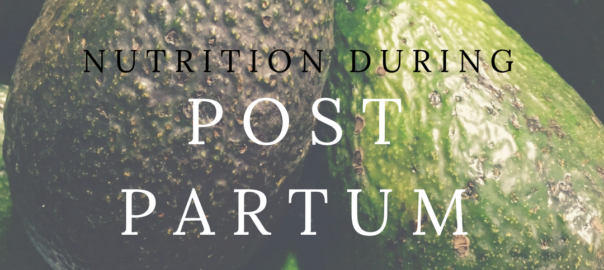Happy Monday everyone, before we jump into this week’s topic some housekeeping things are needed. First off, this week and next week are the FINAL weeks for FREE examination for new mom’s and mom’s with little ones in celebration of Mother’s Day. SHARE, SHARE, SHARE with those you know who could really benefit from unique care.
Secondly, my La Jolla office will be closing this week. Due to unfortunate events, I will no longer be in this location. I am unsure of the location of the second office as of right now, but will update you all as I figure it out. I will still be in Mission Valley part time for those that need to switch care there for now. I’m hoping to stay in the general vicinity of La Jolla or near, but will let you know as I know!
Okay, back to this week’s topic…
I hope you are all enjoying this month’s topic of PostPartum Health. Last week we talked about diet with post partum healing, and why it’s crucial for blood loss, post partum depression and healing. It’s important to note that TRUE post partum healing involves all layers including physical, emotional, relational and nutritional, and that is why I’m talking about different aspects each week.
….
After Post Partum, there are also some medical realities that can happen even from a normal pregnancy and birth, but most are from improper post partum care, or issues that were initiated even before birth.
These are 4 medical realities that can happen postpartum: incontinence, diastasis, tearing and prolapse. These are taken from the book: the 4th Trimester:
1. Incontinence-
Incontinence means that you cannot voluntary control of urine or feces. There’s different kinds of incontinence that can happen.
– Stress incontinence: Peeing even if just a little bit, when jumping or coughing or sneezing
– Urge incontinence: Not being able to hold it when your bladder is full or just feeling like you have to urinate all the time.
“Incontinence is common, but NOT normal. However, many women accept it as normal not thinking that every time they cough in order to stop leakage is to close their legs… ect… Forget about jumping rope or jumping in general after having a baby. Women start adjusting their “new” normal without noticing it. It makes sense. Raising children, working, maybe trying to exercise, these override noticing minimal signs that then turn into impossible to ignore.”
Let’s make this straight…
“For the first days after labor, it is normal to have a little bit of leakage. Beyond that, it’s not normal, and it won’t just resolve itself.
If you do have incontinence, some people think it’s because the pelvic floor is too weak, and they are told to do Kegels (not told how to do them properly). The reality is, about 50% of incontinence is due to too tight of pelvic floor muscles and scar tissue that pulls on the bladder or uterus.”
Overcoming incontinence requires teamwork of looking at the pelvis and sacrum mobility(myself) and working with an internal pelvic floor therapist. When you do this, the incontinence resolves, and you can go back to things slowly.
2. Diastasis.
“Diastasis is a separation that happens to one of the abdominal muscles called the rectus abdominus. This is that muscle that you get that “six pack” look from. Most people call them abs, but we know there’s deeper muscles that contribute to that stability. This muscle group is divided in half down the center by a line of fascia called the linea alba.
Now in pregnancy, because of the growing belly and the weight on the abdominal wall, this muscle can stretch and start to separate. After birth, they don’t just go back to their original position. This separation can be anywhere along this muscle starting at the sternum down to the pubic bone.
You can measure this separation by using your fingertips. It’s measure in fingertip’s width of the distance in the seperation along three different points of the linea alba. Usually the biggest seperation is near the belly button.”
What’s normal??
After birth usually 1 to 2 fingertip’s width is normal. You can still have full function with diastasis, but depends on the size.
10 days to 2 weeks postpartum is when you should be checked for this from your doula or pelvic floor physical therapist. Healing involves specific exercises and breathing to help bring the muscle back together.
Who is most prone?
Actually women with really strong abdominal muscles.
An intact abdominal wall protects your organs. With this split is the potential for a hernia, lower back pain and an overall feeling of physical and emotional instability.
3. Tearing.
“During birth, stretching has to occur. Sometimes the tissue doesn’t have adequate time in order to properly stretch, or they were tight to begin with. This causes tearing.
There are different layers of tearing from 1-4. Stiching can be done, and is done when the tissues are engorged (swollen). So, when the swelling goes down, usually the healing hasn’t happened symmetrical. This can create bumps, and women know that things are just different. Women can feel self conscious, and can have a lot of pain from not normal movement.
Symptoms don’t always correlate with the degree of the tear. Some minor tearing can be more problematic than more serious tearing. This depends how well you are able to rest, how well the repair was made, and your prior history.
The right treatment is needed for the right person.
Your body can also reject the suture material used to repair it. Sometimes this happens with vegetarians because of low connective tissue density.
Tearing can be helped with proper nutritional support. But rest and scar tissue work is essential to decrease pain and normalize function. Sometimes you really can’t avoid tearing, but preparing your birth canal and tissue can be done. Talk to your pelvic floor therapist for more information on this.”
4. Prolapse.
“The bladder, uterus and rectum can fall below their ideal position. This is called prolapse. This results in a feeling of heaviness or bulging. Some women will even say they feel like their insides are falling out.
What contributes to this??
-extended pushing phase in childbirth
-forceps or vacuum extraction
-multiple deliveries
-hypermobile tissue
-return to exercise too quickly
-vegetarian diet
It’s also important to note that if you are still breastfeeding, your ligaments still are loose because of relaxin. Be patient with the healing process. Waiting till after you are done nursing is best if you need some type of prolapse surgery depending on the severity. There is no quick fix for this as well. Surgery doesn’t always work.
I have seen that SOT chiropractic focusing on the sacro iliac joint and pelvic floor work has been very helpful for my patients with this condition.
Vaginal steaming can also be very effective at helping with this condition. Working with a pelvic floor PT, and there’s a practice in yoga called uddiyana bandha kriya that can also be very helpful for prolapse. It tends to pull the pelvic floor up.
I hope these topics were enlightening to all you women rockstars. I encourage you to send this along to anyone you know who is pregnant and getting ready to have a child for prevention purposes, as well as those you know who are still suffering.”
OIL OF THE WEEK

On the Spotlight this week, is DoTerra’s Grapefruit.
“Boosts Immune System
Like the fruit itself, the essential oil of grapefruit is rich in antioxidants. Primarily, it has a wealth of vitamin C. This vitamin, combined with the other antioxidant components present in grapefruit essential oil, boosts the immune system and fights against the activity of free radicals. This oil is effective in protecting the body from all harm done by various oxidants and toxins, including premature aging, degeneration of tissues, macular degeneration, loss of vision and hearing, mental and physical sluggishness, nervous disorders, and other related problems.
Eliminates & Prevents Infections
The antiviral and antimicrobial properties of grapefruit essential oil make it a good disinfectant. It not only protects the body from new infections but also eliminates existing infections. It is particularly effective in treating infections of the colon, stomach, intestines, urinary system, excretory system, and kidneys. Furthermore, it is beneficial for oral and ocular infections as well as infections of the skin.
Microbial Infections
The antiseptic properties of grapefruit essential oil make it perfect for application on bruises, wounds, cuts, and acne to protect them from microbial infections. Furthermore, as an antiseptic, it prevents wounds from developing tetanus or becoming septic.
Stimulates Hormone Secretion
This oil has stimulating effects on both, the body and the mind. It stimulates the brain by making it active and gives a new direction to thoughts. It also stimulates endocrine glands and promotes proper secretion of hormones and enzymes, thereby enhancing the metabolism. It stimulates the nervous system and makes you more active and alert. The digestive system also benefits from this essential oil as it stimulates the secretion of gastric juices and bile in the stomach, as well as the movement of ingested food through the intestines. Furthermore, it stimulates the lymphatic, circulatory, and excretory system.
Relieves Depression
Grapefruit essential oil has an uplifting and relaxing effect on the mind. It induces positive feelings of hope, cures depression, and relieves anxiety and stress. This effect comes from its aroma, and due to its stimulating effects on certain hormones that uplift the mind.
Controls Appetite
If you think you need to eat less, this essential oil could be very helpful. However, that doesn’t mean that you need to take it just before a meal. A regular dose can decrease your appetite and aid in weight management.
Increases Urination
The diuretic properties of grapefruit essential oil keep your body light and free from toxins by increasing urine frequency and volume. It helps in the removal of excess water, fats, sodium, uric acid, and other toxins from the body and also reduces blood pressure to keep the heart healthy. Frequent urination also keeps the urinary tract free from infections. It cleans the kidneys of all calcareous and uric deposits and protects them against renal calculi and infections.
Removes Toxins
Its activity as a lymphatic substance is probably the best property of grapefruit essential oil. The lymphatic system plays a vital role in our body and is involved in the removal of unwanted toxic substances. Grapefruit oil ensures healthy functioning of the lymphatic system and boosts its activity, thereby clearing the body of toxins and fighting problems like cellulite, blood urea, rheumatism, arthritis, gout, and renal calculi.
Acts as Tonic
A tonic is something that generally tones up organ systems. A hair tonic tones hair follicles and keeps your hair healthy and strong. A complete health tonic tones up all the organ systems operating inside your body, including the digestive, circulatory, metabolic, nervous, and excretory systems. It increases overall health and strength. Similarly, a liver tonic tones up the liver and improves its secretion rate and function.
If you think you need a tonic for any reason, turn to grapefruit essential oil, which has long been known as a great tonic for the body.”



